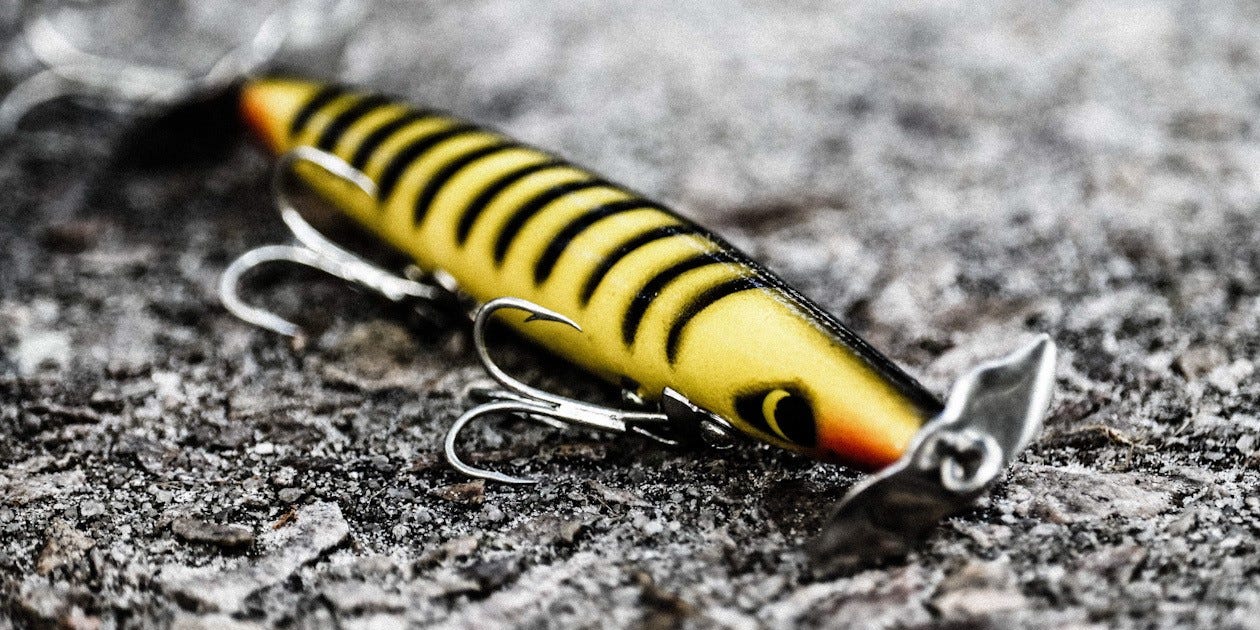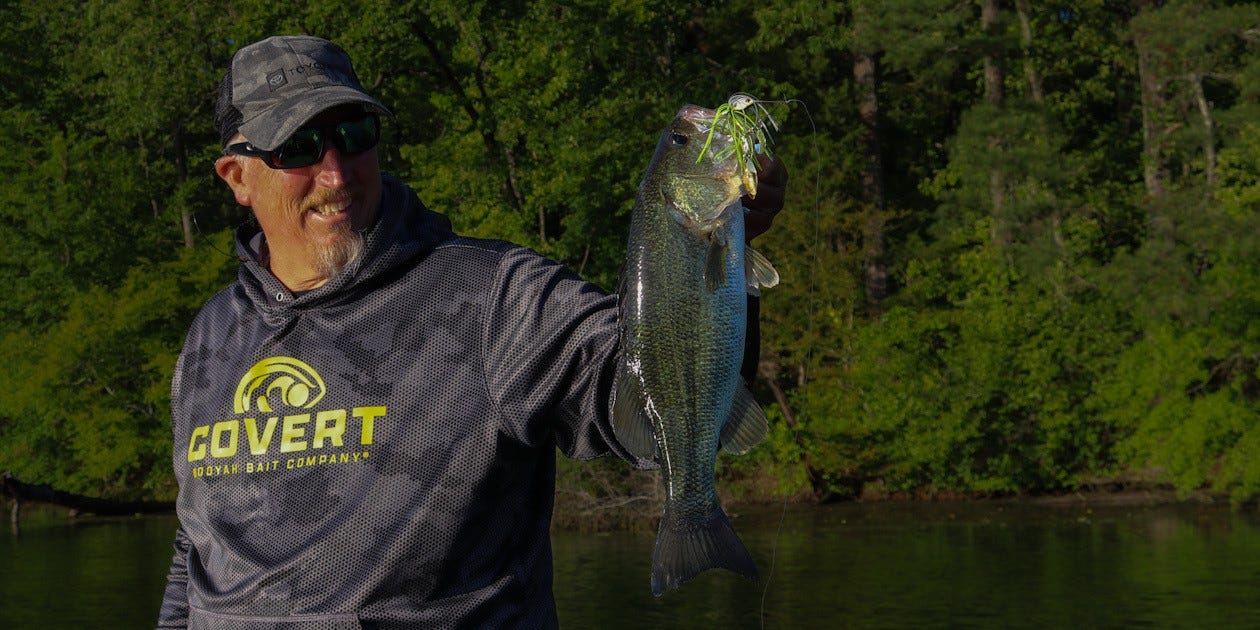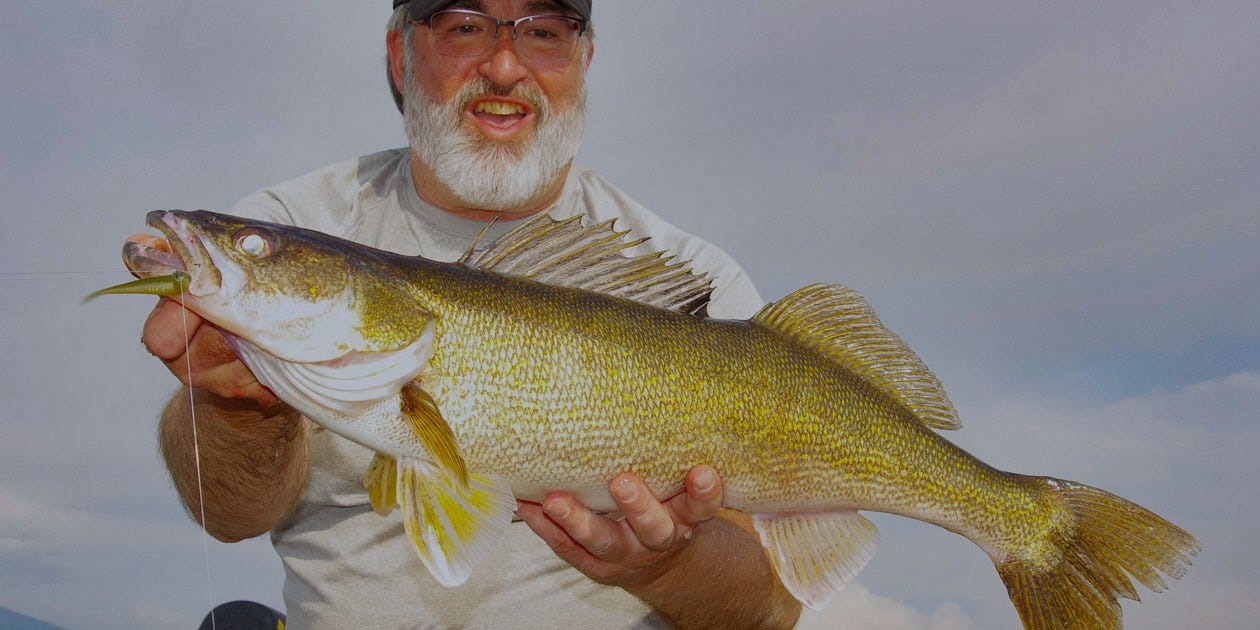- Jan 6, 2022
Essential Ice Fishing Strategies for Mid-Winter Transition Panfish
Learn how crappies, bluegills and perch move as winter progresses and discover the best ice fishing strategies for capitalizing on that understanding.
The progression of winter delivers changes beneath the ice, and as conditions change, fish must move to new spots and alter their behavior. Finding ice fishing success through mid-winter begins with considering the transformation that is taking place and adjusting accordingly with locations and strategies.
Fish Ed and Destination Fish host Jon Thelen spends much of his awake time on the ice throughout winter, whether scouting, filming or testing lures, so he has an outstanding sense of how fish behavior changes as ice season progresses. In Minnesota, where Thelen does the most fishing, changes in panfishing scenarios become noteworthy late in December and early in January.
Thelen enjoys fishing the mid-winter transition for panfish because the crappies, bluegills and perch make the same moves and stage in the same types of locations, meaning they’ll typically be in areas together. They might hold in different parts of the water column and frequently favor different offerings, but they’ll be together in areas, allowing for great action and mixed-bag catches.
Changes Taking Place
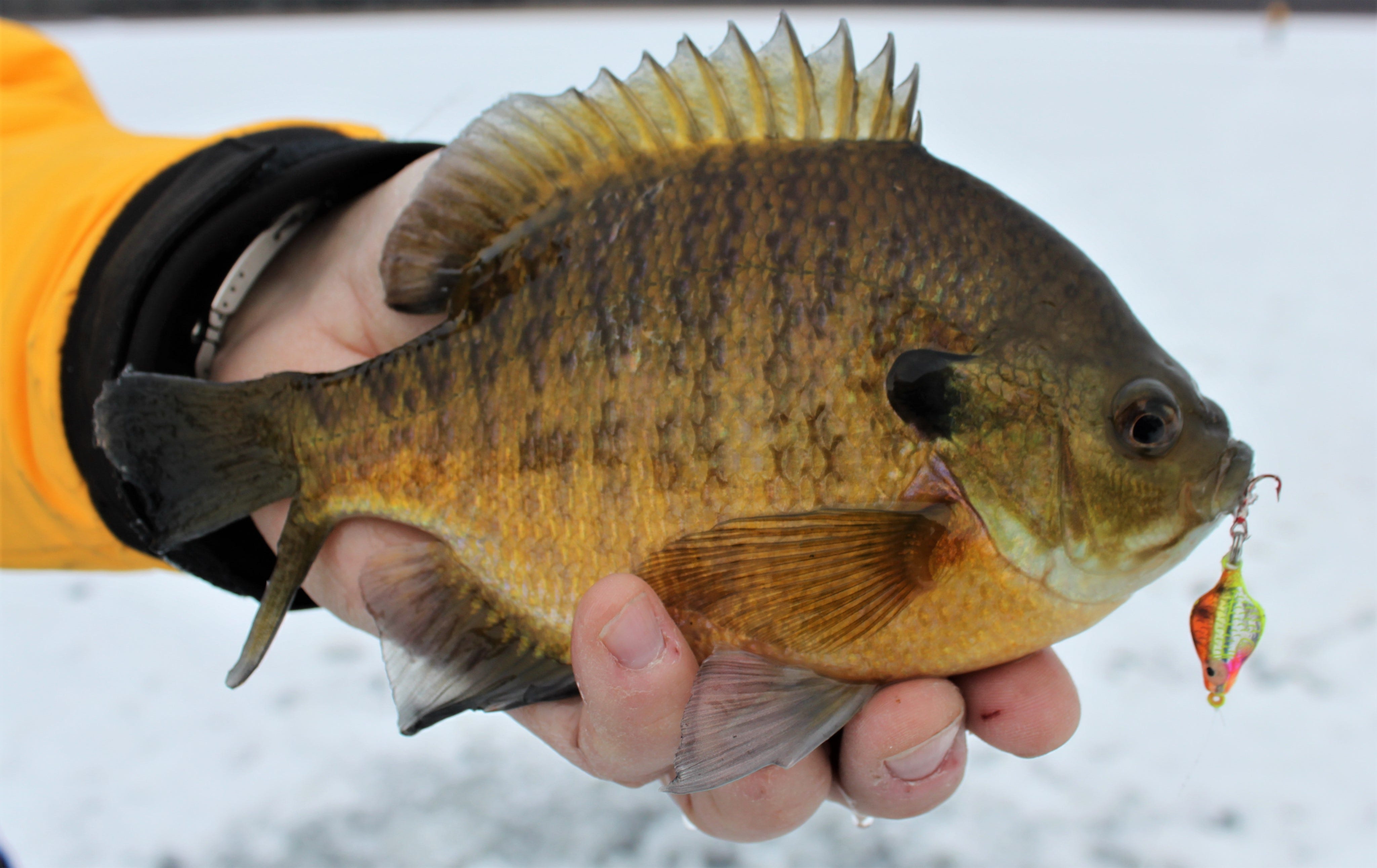

The biggest change that typically occurs around start of the new year is that increased snowfall and thicker ice lead to reduced light penetration, which causes weeds to die in the shallow margin areas that hold the most panfish early in the ice season. When the weeds die, it causes dissolved oxygen levels to plummet while simultaneously eliminating the panfish’s favorite form of cover. The result is that the panfish must flee those areas, putting an end to the early-ice, shore-oriented bite.
The panfish stray deeper during this time, but Thelen has found that they don’t necessarily head straight to the deepest holes in the lake. Instead, they move to middle depths, often in the 20- to 30-foot range, and often in holes or off drops that are in the vicinity of the weeds they had been using.
“They don’t necessarily just swim to the middle of the lake all at once,” Thelen said. “I like to concentrate on the holes that are just out from good early-ice areas.”
Along with moving to deeper water, the fish school up more at this time, mostly likely seeking security in numbers as they move to areas that are generally more open and lack weedy cover. The schools also move more during a day, commonly traveling within a deeper hole, as opposed to holding tight in the weeds or along a weed edge. In addition, the crappies in particular tend to move much higher in the water column.
Because of these changes, Thelen commonly drills multiple holes in an area so he can search more horizontally, drilling some over the slopes that drop into the hole and others over the deepest water to provide more searching options. He also watches the entire water column on his electronics and works higher in the water column with his baits when crappies are his primary targets.
Added Stealth
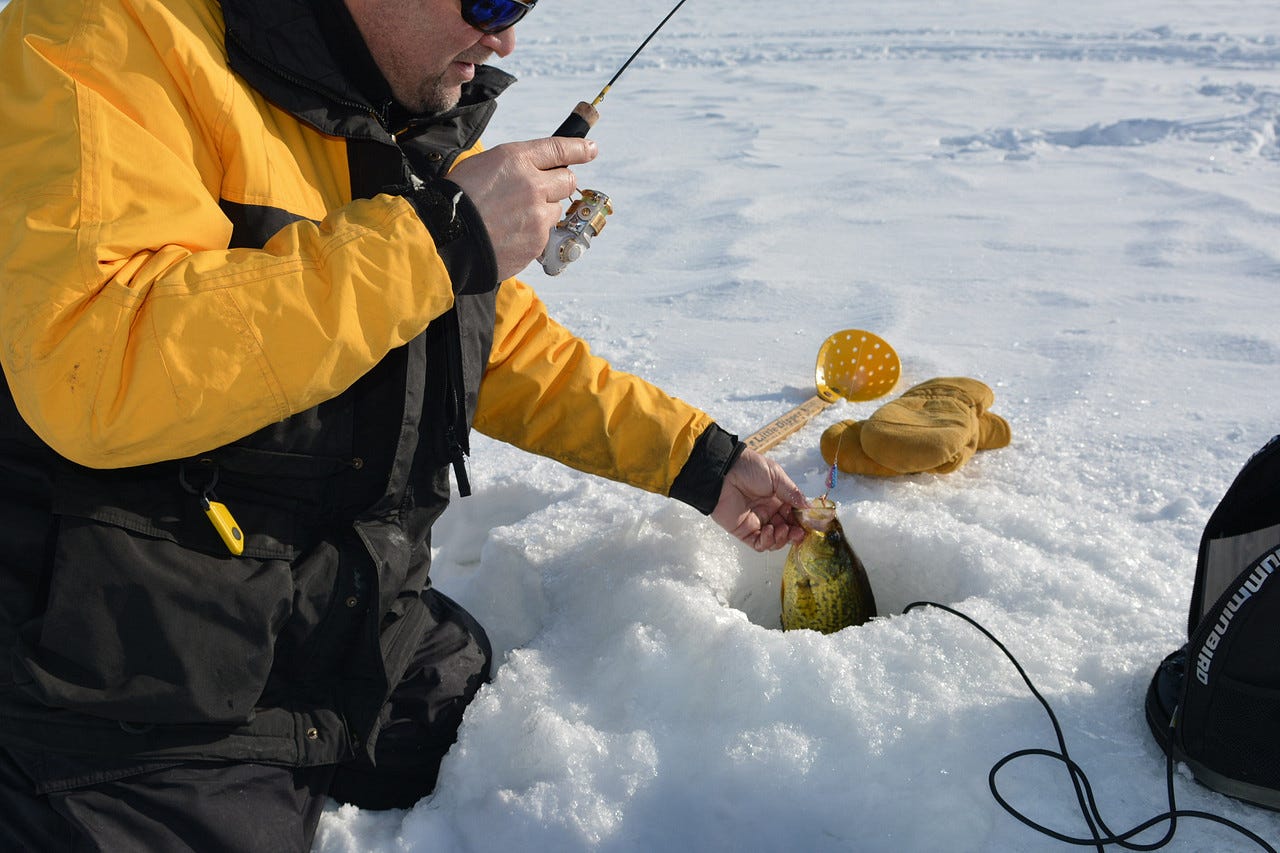

Thelen has found that the fish are extra spooky this time of year. Along with having just moved to more open water and often swimming higher in the water column, schooled up fish equate to an entire school of eyes, ears and lateral lines, so when you spook one, it tends to spook to whole school
Because of the added wariness of the fish, Thelen rarely fires up his auger to drill additional holes once he starts fishing, unless he is making a wholesale move to a new area. Instead, he invests extra time drilling numerous holes before ever dropping a bait in the water, so he can more stealthily move from hole to hole when he is searching for active fish.
For the same reason, Thelen puts an extra premium on walking lightly and minimizing unnecessary banging of gear as he fishes.
Lures & Presentations
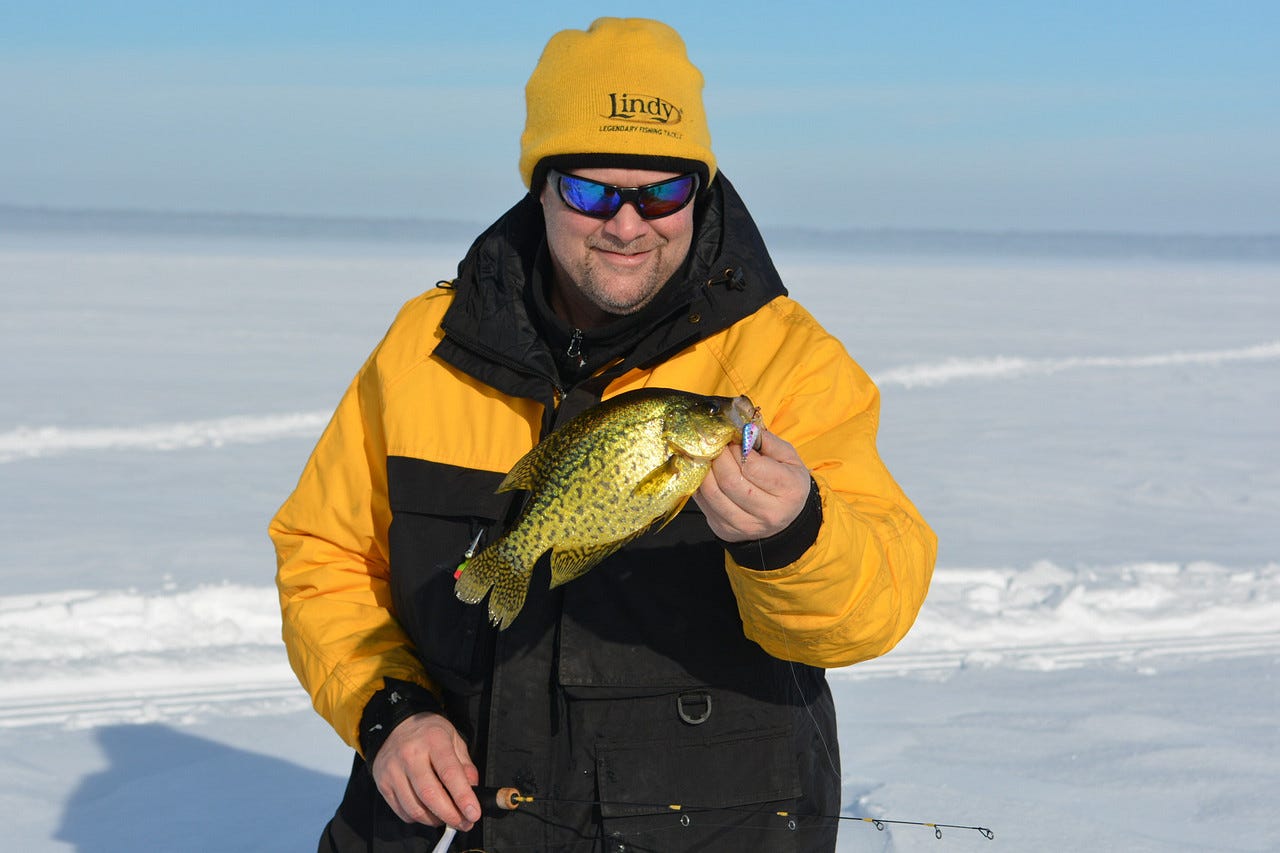

More so than at other times, the fish’s moods seem to swing when they are in the mid-winter transition, and either subtle or aggressive lures might be the ticket some days. That said, whether Thelen chooses larger, bolder panfish offering or something smaller and more subtle, he tends use slower cadences and less aggressive presentations during mid-winter than he used on early ice.
Early in the ice season, he likes to bang a Tungsten Toad on the bottom to prompt strikes from bluegills that remain aggressive. During the mid-winter transition, the same approach is more apt to spook the fish, so he’ll jig very minimally, keeping his Tungsten Toad just off the bottom, or even use a dead stick approach so he’s not adding any movement.
Simply slowing down can be a critical difference maker on days when fish are looking at lures and won’t quite commit. The opposite can be true as well, so Thelen experiments with a range of cadences and with the aggressiveness of movements to gauge the fish’s daily preferences. Typically, though, slow is the way to go this time of year.
Thelen generally favors spoons for crappies this time of year and has found that a spoon tipped with a minnow head will help him catch larger crappies overall than he typically does with a jig. He’ll often start with a Rattl’N Flyer Spoon but will switch to a Glow Spoon if he thinks he needs the extra glow and louder sound for more aggressive fish or conversely switch to a Quiver Spoon to slow the fall and make the presentations less aggressive. All three come in 1/16-ounce versions that are well suited for targeting crappies.
Thelen’s 1-2 Punch for 3 Species
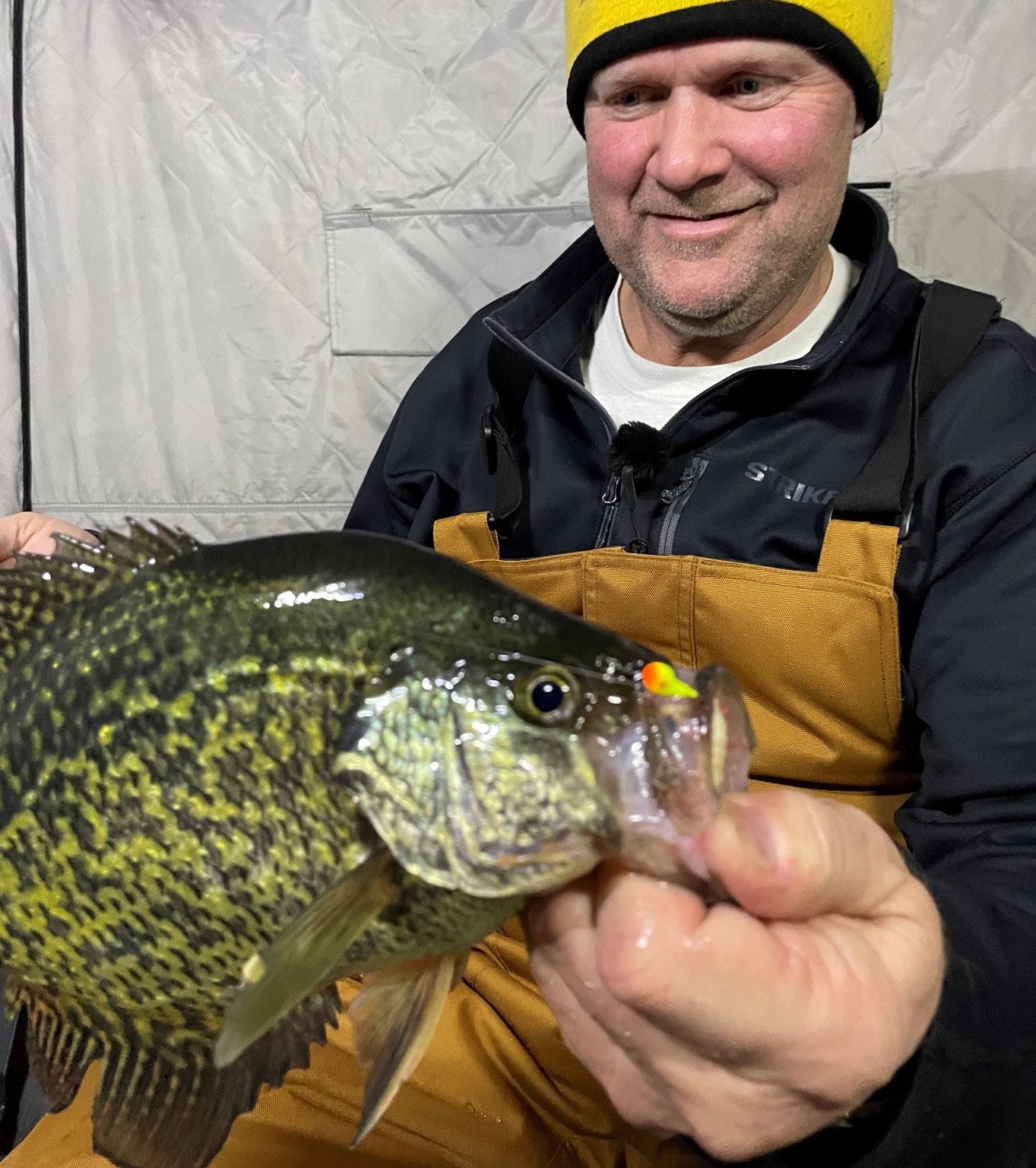

- Crappies – 1/16-ounce Rattl’N Flyer Spoon – Tipped with a minnow head and jigged high in the water column.
- Bluegills – Tungsten Toad – Tipped with larvae and dead sticked 6 inches off the bottom.
- Perch – Apt to take either bait, but typically near the bottom, with the bluegills, adding a fun bonus.
- Fish don’t always play by the rules so don’t be too surprised when you catch a bluegill on your spoon or a crappie on your jig!
Under Pressure
See John Thelen’s approach for when the panfish are heavily pressured.

